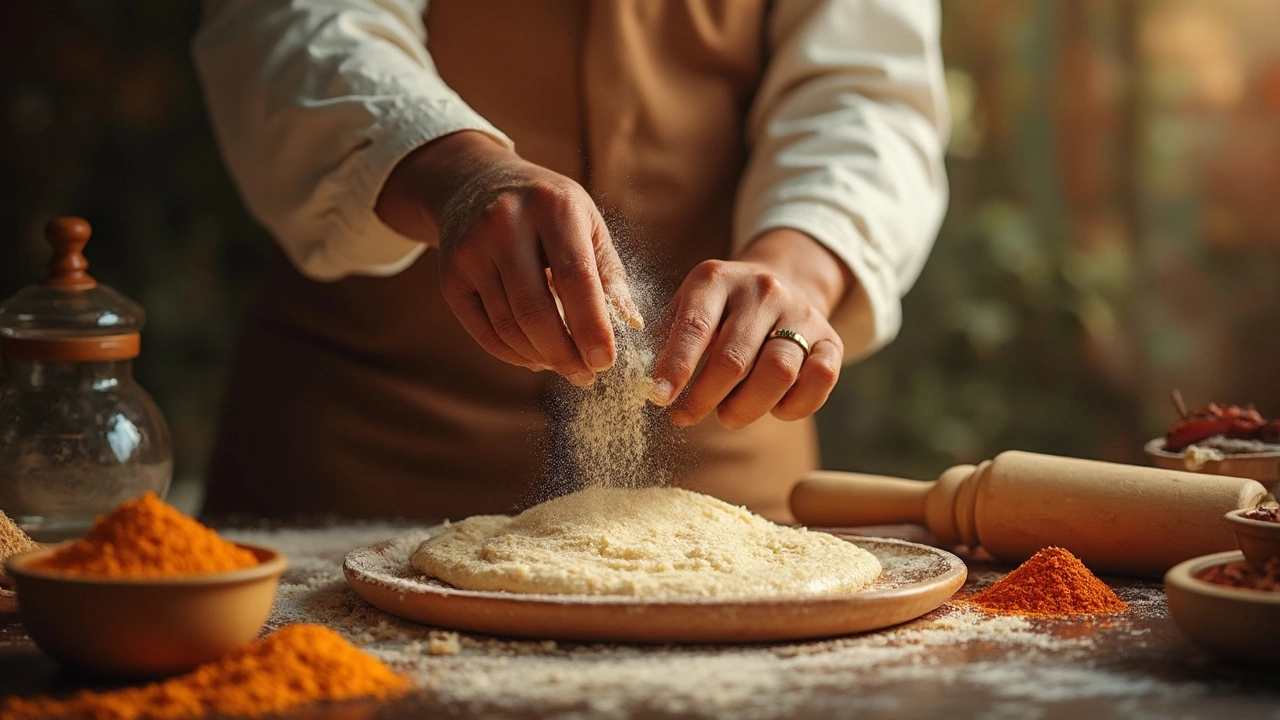Roti Making: Master Soft, Fluffy Indian Flatbreads
When working with Roti Making, the art of mixing, rolling, and cooking unleavened wheat flatbreads that appear on almost every Indian table. Also known as chapati, it blends simple ingredients into a staple that fuels families. Adding baking powder, a mild leavening agent, can soften the dough and help the roti puff, while incorporating oil at the right stage improves pliability and gives a tender bite. Some cooks even sprinkle a pinch of baking soda for extra lift, though it changes flavor slightly. roti making therefore pulls together technique, ingredients, and heat to create that perfect, airy disc.
Key Steps That Shape Every Roti
Roti making encompasses dough preparation, which means choosing the right flour, water ratio, and resting time. Whole‑wheat atta offers the classic nutty flavor, but a mix of atta and all‑purpose flour reduces gluten toughness, making the dough easier to roll. A typical ratio is 2 cups flour to about ¾ cup water, adjusted until the dough feels soft but not sticky. The dough should be kneaded for 5‑7 minutes – enough to develop a smooth surface without over‑working the gluten. After kneading, let it rest for 15‑20 minutes; this rest period relaxes the gluten, allowing the roti to puff later. Roti making requires proper kneading, because a well‑worked dough spreads evenly when rolled, reducing tearing and uneven cooking.
Rolling and cooking are the next crucial chapters. Roti making benefits from rolling each ball to a uniform 6‑8 mm thickness; too thick and the roti stays dense, too thin and it may break. The cooking surface – a hot cast‑iron tawa or non‑stick pan – must be preheated to medium‑high. When the dough contacts the hot tawa, tiny steam pockets form; flipping at the right moment releases that steam, letting the roti puff up. Proper heat enables roti puffing, and a quick second flip seals the airy interior while creating golden spots. If the pan is too cool, the roti stays flat; if too hot, it burns before puffing.
Common problems usually trace back to one of the steps above. A roti that won’t puff often suffers from insufficient heat, under‑rested dough, or missing leavening agents like baking powder. Hard or dry roti can result from too much flour, over‑kneading, or skipping the oil addition. Cracks appear when the dough is too dry or rolled unevenly. The troubleshooting guide for “Why isn’t my roti puffing?” suggests checking the tawa temperature, ensuring a brief rest, and adding a pinch of baking powder if the dough feels stiff. Meanwhile, “Baking soda in roti: should you use it?” explains that a tiny amount can boost softness but may alter the flavor profile, so experiment in small batches.
The collection below dives deeper into each of these points. You’ll find detailed advice on choosing the right flour, mastering dough hydration, using oil and leavening agents, and fixing specific issues like flat chapatis or tough textures. Whether you’re a beginner looking for foolproof steps or an experienced cook hunting for the perfect puff, the articles ahead give you actionable insights to elevate every roti you bake.

Does Baking Soda Make Roti Soft?
Making the perfect soft roti is an art, and many wonder if baking soda can be the secret ingredient to achieve that fluffy texture. This article explores the effects of baking soda on dough and shares practical tips on achieving soft, pliable rotis. We delve into experimenting with various dough ingredients while understanding baking soda's role in the process. Additionally, we discuss alternative methods and common pitfalls in roti-making. Get ready to mix, knead, and flip your way to softer rotis!